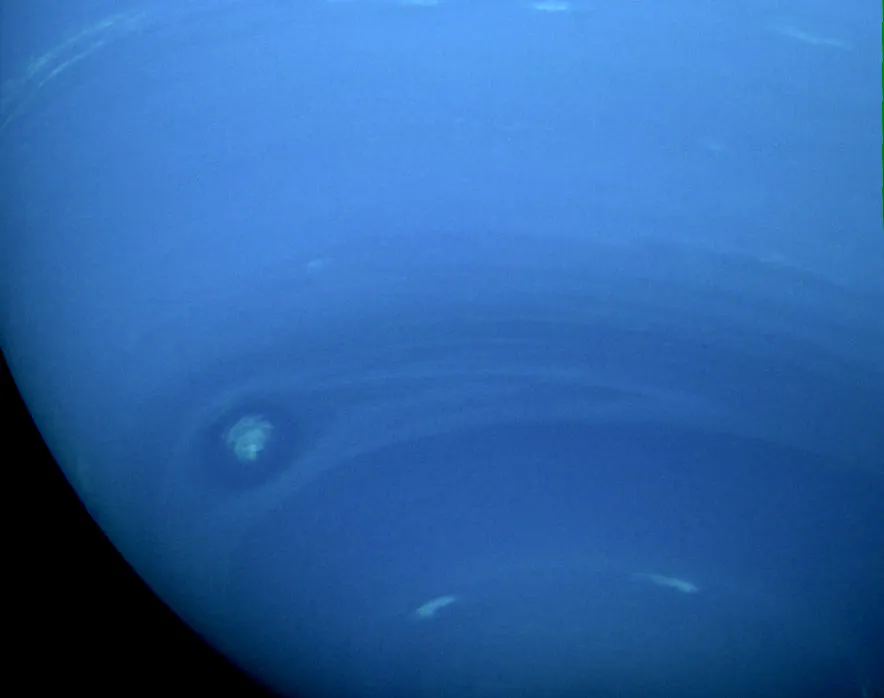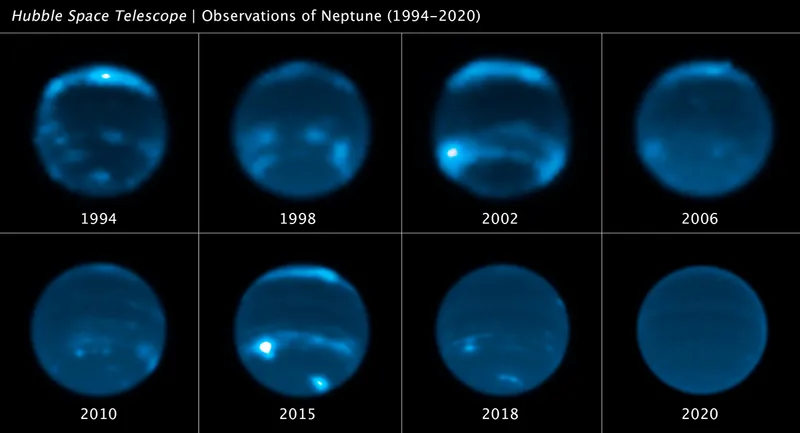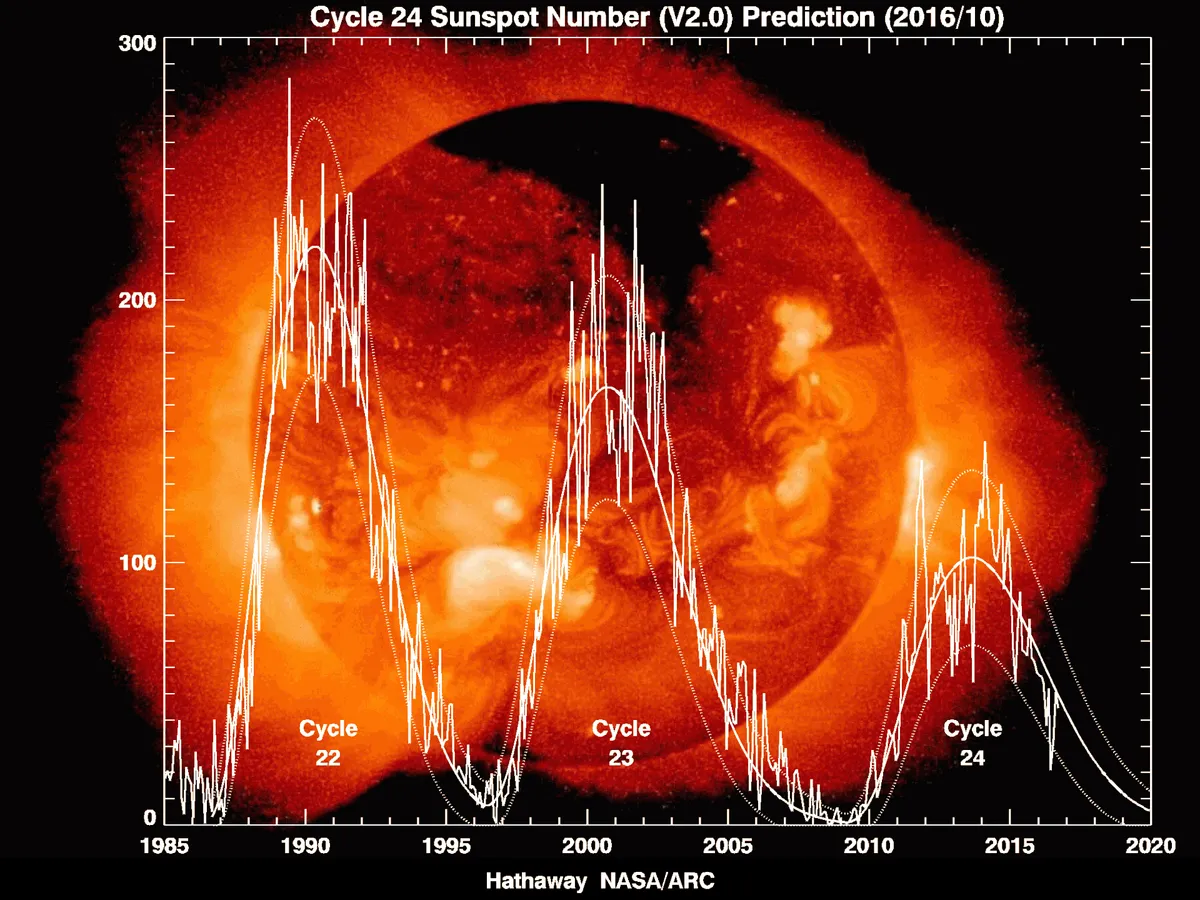The 11-year solar cycle of our Sun is responsible for Neptune’s clouds disappearing, according to a new study made using the Hubble Space Telescope.
Neptune is the most distant planet from the Sun, and its orbit is so huge that its seasons each last about 40 years.
But seasonal changes aren’t what’s driving changes in Neptune’s cloudy weather: it’s the rhythmic activity of our Sun.

This is despite the fact that Neptune is so far away and receives just 0.1% of sunlight intensity compared with Earth.
Our Sun is more active at times than others, with dynamic surface features like sunspots and solar prominences following peaks and troughs over a period of about 11 years.
This is known as the solar cycle, and the disappearance of Neptune's clouds seems to be linked to that very solar cycle.
The Sun is currently going through Solar Cycle 25.

What the Neptune solar cycle study found
A team of astronomers led by the University of California (UC) Berkeley studied Neptune and found that an abundance of clouds usually observed at mid-latitudes began to fade in 2019.
The findings have been published in the journal Icarus.
"I was surprised by how quickly clouds disappeared on Neptune," says Imke de Pater, emeritus professor of astronomy at UC Berkeley and senior author of the study.
"We essentially saw cloud activity drop within a few months."
"Even now, four years later, the most recent images we took this past June still show the clouds haven't returned to their former levels," says Erandi Chavez, a graduate student at the Harvard-Smithsonian Center for Astrophysics, who led the study.
"This is extremely exciting and unexpected, especially since Neptune's previous period of low cloud activity was not nearly as dramatic and prolonged."

Chavez and the team used a wealth of data from some of humanity's greatest telescopes to carry out the study.
Data included Keck Observatory images taken from 2002 to 2022, Hubble Space Telescope observations beginning in 1994 and data from the Lick Observatory in California from 2018 to 2019.
This allowed the team to record the evolution of Neptune's atmospheric appearance over time.
Data shows an apparent pattern between seasonal changes in Neptune’s cloud cover and the solar cycle.
Solar cycle and Neptune's clouds: what's going on?
When the Sun is more active, the bodies of the Solar System are basked in more intense ultraviolet radiation.
This new study shows that two years after a solar cycle peak, more clouds appear on Neptune.
The team observed a correlation between the number of clouds on Neptune and the planet's brightness, caused by reflected sunlight.
2.5 cycles of cloud activity were recorded over the 29-year span of Neptune observations.
The team found Neptune's reflectivity increased in 2002 then dimmed in 2007.
The ice giant planet became bright again in 2015, then darkened in 2020 to the lowest level ever observed.
Changes in Neptune's brightness caused by the Sun seem to fluctuate in sync with the appearance and disappearance of its clouds.
But the study notes a 2-year lag between the peak of the solar cycle and the abundance of Neptunian clouds.
These changes are caused by photochemistry, which occurs high in Neptune's upper atmosphere and takes time to form clouds.

Key takeaways from the study
"These remarkable data give us the strongest evidence yet that Neptune's cloud cover correlates with the Sun’s cycle," says de Pater.
"Our findings support the theory that the Sun's UV rays, when strong enough, may be triggering a photochemical reaction that produces Neptune’s clouds."
"It's fascinating to be able to use telescopes on Earth to study the climate of a world more than 2.5 billion miles away from us," says Carlos Alvarez, staff astronomer at Keck Observatory and co-author of the study.
"Advances in technology and observations have enabled us to constrain Neptune's atmospheric models, which are key to understanding the correlation between the ice giant's climate and the solar cycle."
Read the full paper at https://www.sciencedirect.com/science/article/abs/pii/S0019103523002440?via%3Dihub
